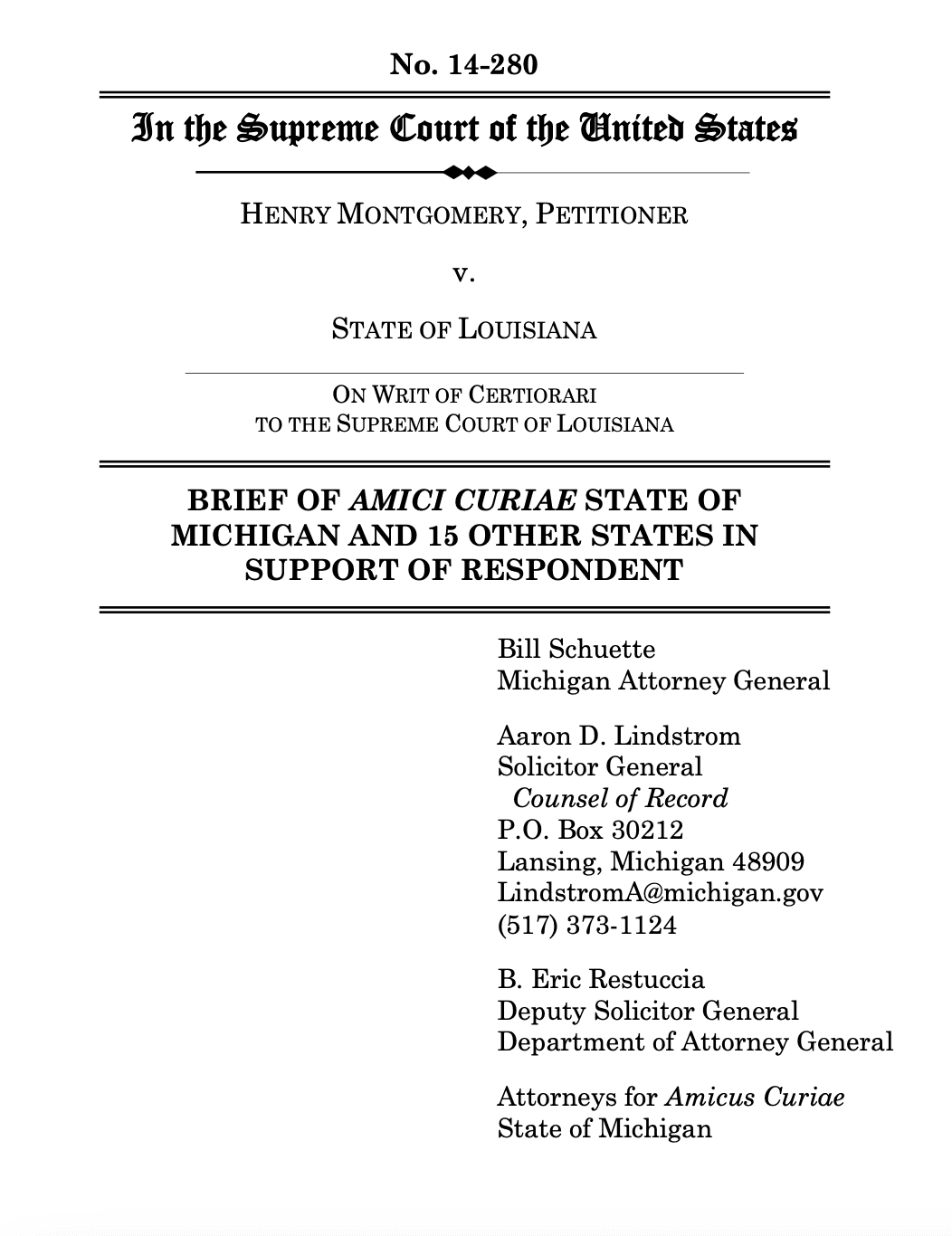
Summary of Argument
Contrary to the suggestion of some, the prisoners who seek the retroactive application of Miller are not all hapless aiders and abettors who played a secondary role and whose cases reached finality a year or two before the Miller decision. Rather, the cases span more than fifty years. And they include some of the most vicious criminals anywhere.
In Michigan, for example, James Porter systematically executed a woman and her four children. He committed this brutal crime in 1982, when he was 16. The idea of having a resentencing hearing more than 30 years later to examine Porter’s “immaturity [and] impetuosity,” 132 S. Ct. 2468, when he is now almost 50 years old is dubious. Such examples are legion throughout the states.
In fact, the experience of the states with some of the largest number of murderers committed by juveniles (Pennsylvania, Michigan, Louisiana, Illinois, and Missouri) underscore the deep problems of finality raised by this case. Of the more than 2,000 offenders nationwide, as many as half were sentenced more than 20 years ago.
Even aside from the practical limitations on retroactivity, the determination whether a rule is substantive and therefore should be applied retroactively should depend on whether the conduct for which the defendant is currently incarcerated is not criminal or carries a sentence that the law cannot impose. By this definition, Miller did not announce a substantive rule and does not apply.
This rule makes sense because while it offends basic fairness to force a criminal to serve a sentence that could never have been imposed, that is not the case here. Miller does not require that the juvenile receive a different sentence, but a different process. Montgomery could again receive the same sentence— life without parole—even if Miller applied. The mandatory nature of the sentence is not a part of the punishment, but only a description of the mechanism for the decision. Miller did not exclude a category of punishment.
The courts below that have applied Miller retroactively and the United States in its argument that Miller should apply retroactively both make two primary errors.
First, the fact that Miller changes the range of sentences, requiring the option of a more lenient sentence, does not indicate that it is a substantive change. The key point is that the same sentence may still be imposed. In this way, not a single criminal defendant is currently held for a sentence that could not have been imposed after Miller.
Second, the fact Miller requires a sentencer to consider additional factors, namely the offender’s youth and related characteristics, does not mean that it changes the sentencing elements. Miller does not require any specific finding. It only requires individual sentencing.